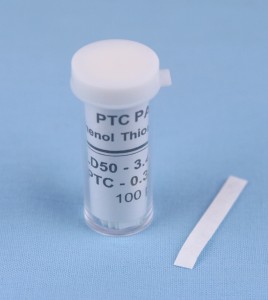 In the past, wine, not food, was considered the culprit when it came to unsuccessful food and wine pairings. But realistically, almost every wine produced today will work with food. Of course there will still be the occasional horrible combination, not unlike having your morning orange juice after brushing your teeth.
In the past, wine, not food, was considered the culprit when it came to unsuccessful food and wine pairings. But realistically, almost every wine produced today will work with food. Of course there will still be the occasional horrible combination, not unlike having your morning orange juice after brushing your teeth.
The impact of food on wine is almost entirely determined by the balance of primary tastes in the food: sweet, salt, sour, savory or bitter. Certain foods will change when matched with certain wines.
But what if these tastes were perceived dramatically differently by each of us? Recently I watched a group of tasters comparing their tolerance for bitterness. Each was given a PTC Strip (phenylthiocarbamide) and asked to place it on their tongue. (The strips can be bought at most online school science project vendors.) It was startling to see how quickly some wanted to remove the strip. Others in the room kept it in for minutes, unable to detect bitterness at all. The everyday example could be how some people drink only espresso or dark black coffee while others add cream or sugar.
Because we all vary in our sensitivities and preferences there is no simple answer to what wine goes best with what food, but some dishes are higher risk than others. What this simple exercise shows us is we all have different tastes and react differently when wine and food are paired. But that doesn’t mean every new pairing is a crap shoot. The key to successful pairing experiments is knowing which foods are more likely to react to wine and understanding which pairings are high risk and which are low.
One of the highest risk factors is a food’s sweetness. Sweet foods can increase bitterness, acidity, astringency and even create a burning sensation when paired with wine. The reaction can also decrease the wine’s body, richness and sweetness. Sweetness is the No. 1 culprit for creating unpleasant interactions. It is because of this that we have the standing suggestion that the wine should always be sweeter than the food.
On the other end of the risk spectrum is salt. Salt is one of the most wine-friendly components of food, and can help soften some of the harsher elements in wine. Salt will increase the perception of body in the wine and decrease the perception of bitterness and acidity.
This week I encourage you to experiment with sweet and salt while pairing your wines.
THE VALUE
- 2011 Pacific Rim Columbia Valley Riesling, Washington (about $14 retail)
THE SPLURGE
- NV Sandeman Porto Tawny 10 Years Old, Portugal (about $40 retail)